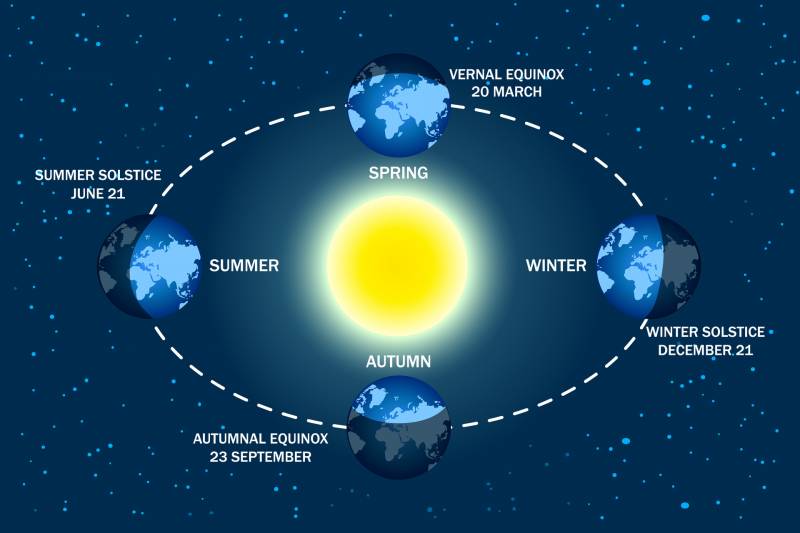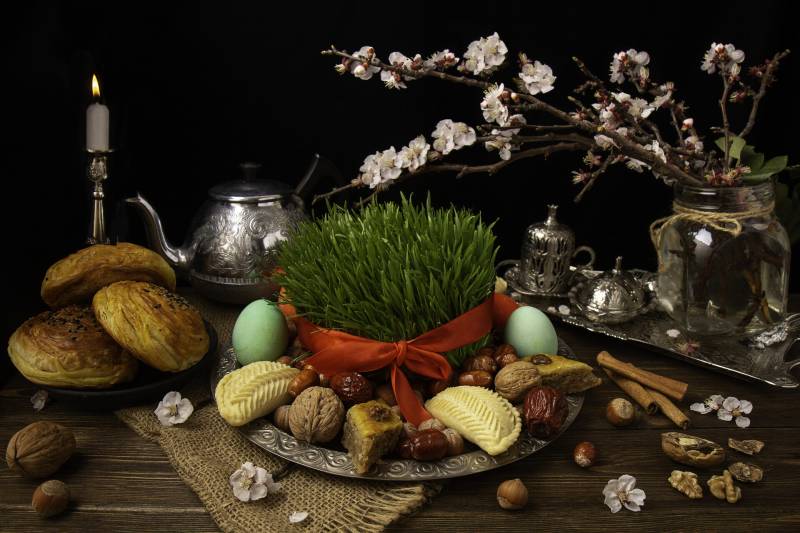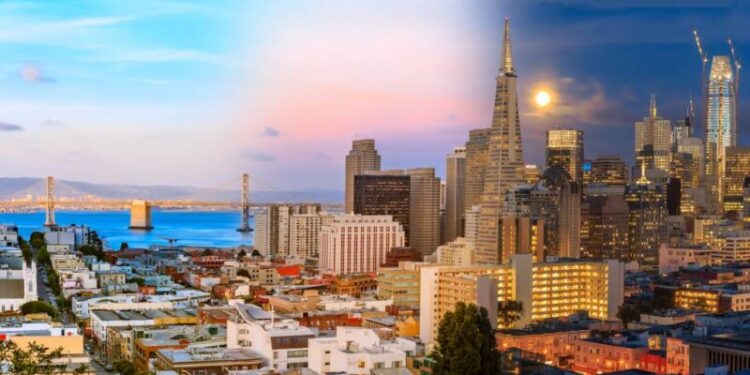It may not feel like it on these chillier days we’ve been experiencing recently … but spring is in the air.
The spring equinox — the day when we get almost equal amounts of daylight and nighttime — is approaching. What exactly are equinoxes, when do they happen, why do they happen, and how can you celebrate locally?
Read on for all you need to know about the spring equinox — and the various ways you can celebrate in the Bay Area.
The science of seasonal change
The 2022 spring equinox — also called the vernal equinox — will occur on Sunday, March 20, at 8:33 a.m. PST. This is the time when we Californians can officially welcome the beginning of a new astronomical season: spring.
These seasonal changes happen through phenomena known as equinoxes and solstices. And they’re made possible thanks to the slight tilt of Earth’s axis.
 Illustration shows the illumination of Earth during various seasons and its movement around the sun. (iStock)
Illustration shows the illumination of Earth during various seasons and its movement around the sun. (iStock)
During the spring equinox, the sun is shining directly over Earth’s equators. The Northern Hemisphere prepares for warmer days (spring), while the Southern Hemisphere prepares for cooler days (fall).
Our hemispheres experience opposite seasons with roughly 12 hours of daylight and 12 hours of nighttime during equinoxes. This means that while we experience spring here in California, countries in the Southern Hemisphere like New Zealand and Australia are experiencing fall.
But it’s worth noting that some countries define the beginning of their seasons differently. For example, both New Zealand and Australia use the meteorological definition of seasonal change instead of the astronomical definition.
Meteorological definitions have the seasons beginning on the first day of the month that includes the equinoxes and the solstices — not on the days of the equinoxes and solstices themselves (per the astronomical definition). So for Australia and New Zealand, fall began on March 1, instead of when their fall equinox occurs — which is on March 21, 2022, local time.
During solstices, we experience longer days or nights. These, like equinoxes, also happen twice a year, in June (summer) and December (winter).
During the summer solstice in June, Earth’s tilt receives the most amount of sunlight in the Northern Hemisphere. The Arctic Circle receives light for a full 24 hours during this time — while at the Antarctic Circle, in the Southern Hemisphere, the sun will only make its appearance briefly around noon. But during the winter solstice in December, it’s the opposite: During this period, the sun will make a brief appearance in the Arctic Circle, and it’s the Antarctic Circle that will have light 24 hours a day.
We can bask in the sun on warm summer days, have ski adventures in the winter, enjoy the fall foliage and admire wildflowers in the spring — all due to Earth’s tilt on its rotational axis and movement around the sun.
Celebrations around the equinox
Persian New Year (Nowruz)
The spring equinox also marks the Persian New Year, or Nowruz, which means “new day” in the Persian language.
Nowruz is a very special occasion rooted in Zoroastrian traditions and dating back more than 3,000 years. It is celebrated by Iranians, Afghans and people from many other cultures around the world, and involves spending time with loved ones and eating delicious foods while welcoming spring. In this explainer from 2021, KQED’s Kyana Moghadam shares reflections from Northern California’s Iranian American community.
 Image shows Nowruz table decoration with shekerbura, paklava, qoqal and semeni. (iStock)
Image shows Nowruz table decoration with shekerbura, paklava, qoqal and semeni. (iStock)
To celebrate Nowruz, the Asian Art Museum in San Francisco is hosting a number of events this year. For a fun and festive virtual program honoring the beginning of spring, you can join a Persian New Year Virtual Storytelling event happening on Sunday, March 20, at 11 a.m.
You also can discover your favorite artwork, mingle, and enjoy food and drinks with the community while listening to personal stories of Nowruz traditions by visiting the Asian Art Museum in person on Thursday, March 24, at 6:30 p.m.
Easter
Easter is celebrated on the Sunday after the first full moon that occurs after the spring equinox. For those celebrating this year, Easter will be observed on Sunday, April 17, since the first full moon (also known as the pink moon) occurs on Saturday, April 16.
If you’re looking for a free egg hunt for the whole family, there’s one happening at the Spring Eggstravaganza at the Mill Valley Community Center on Saturday, March 26. There will be live entertainment, food and more.
Please note that the majority of Easter festivities in the Bay Area will be taking place in April.
Ostara
Ostara is a Wiccan holiday that celebrates fertility, rebirth and renewal. Rituals during Ostara can include learning about the goddess Ostara, meditation, going outdoors to celebrate the awakening of nature, and more. And because spring is the start of the growing season, a common way to celebrate Ostara is to plant seeds.
Other cultural or religious holidays, such as the Moon Festival, Holi, Christmas, Higan and Navaratri, also are celebrated around the equinoxes in March and September.




















